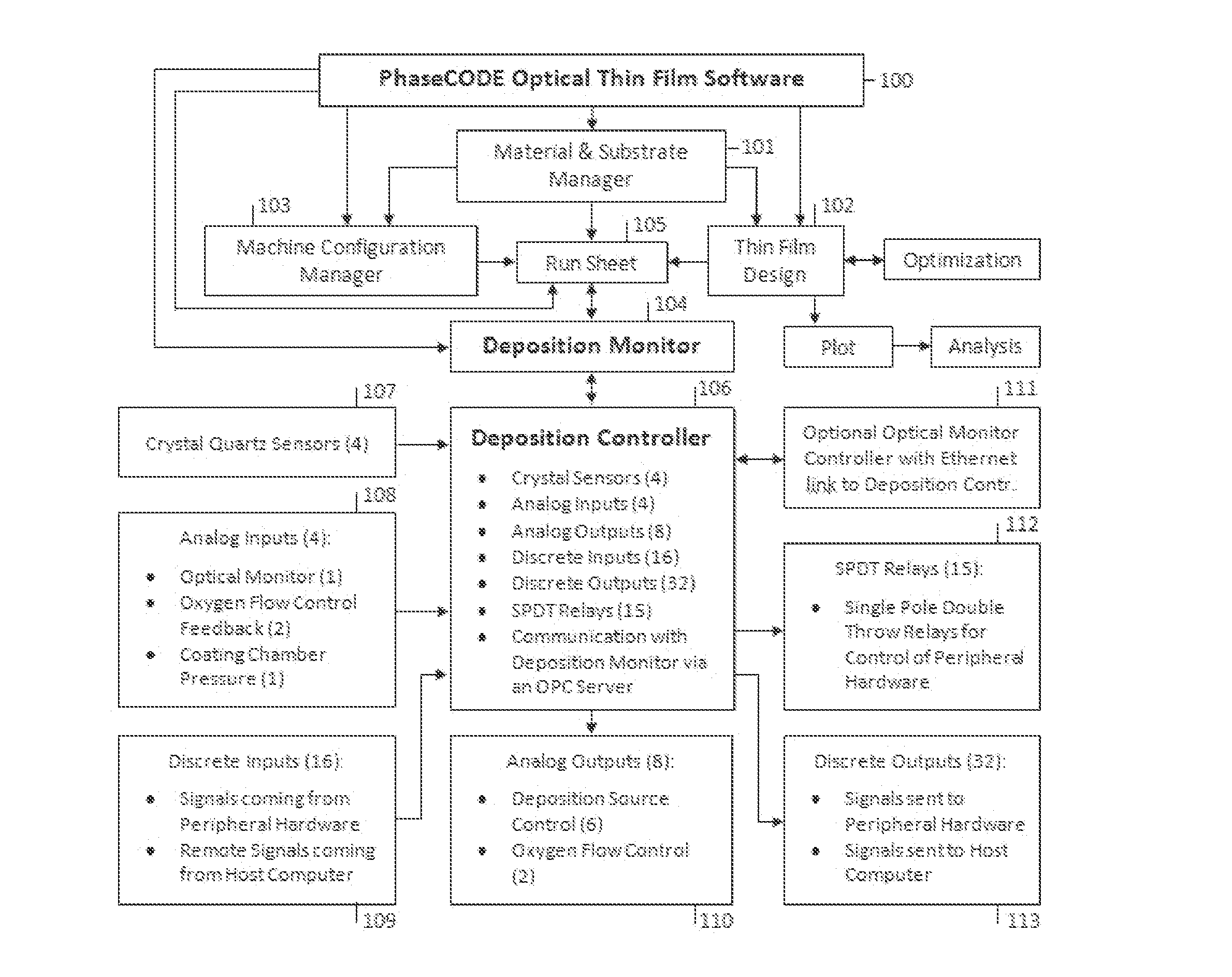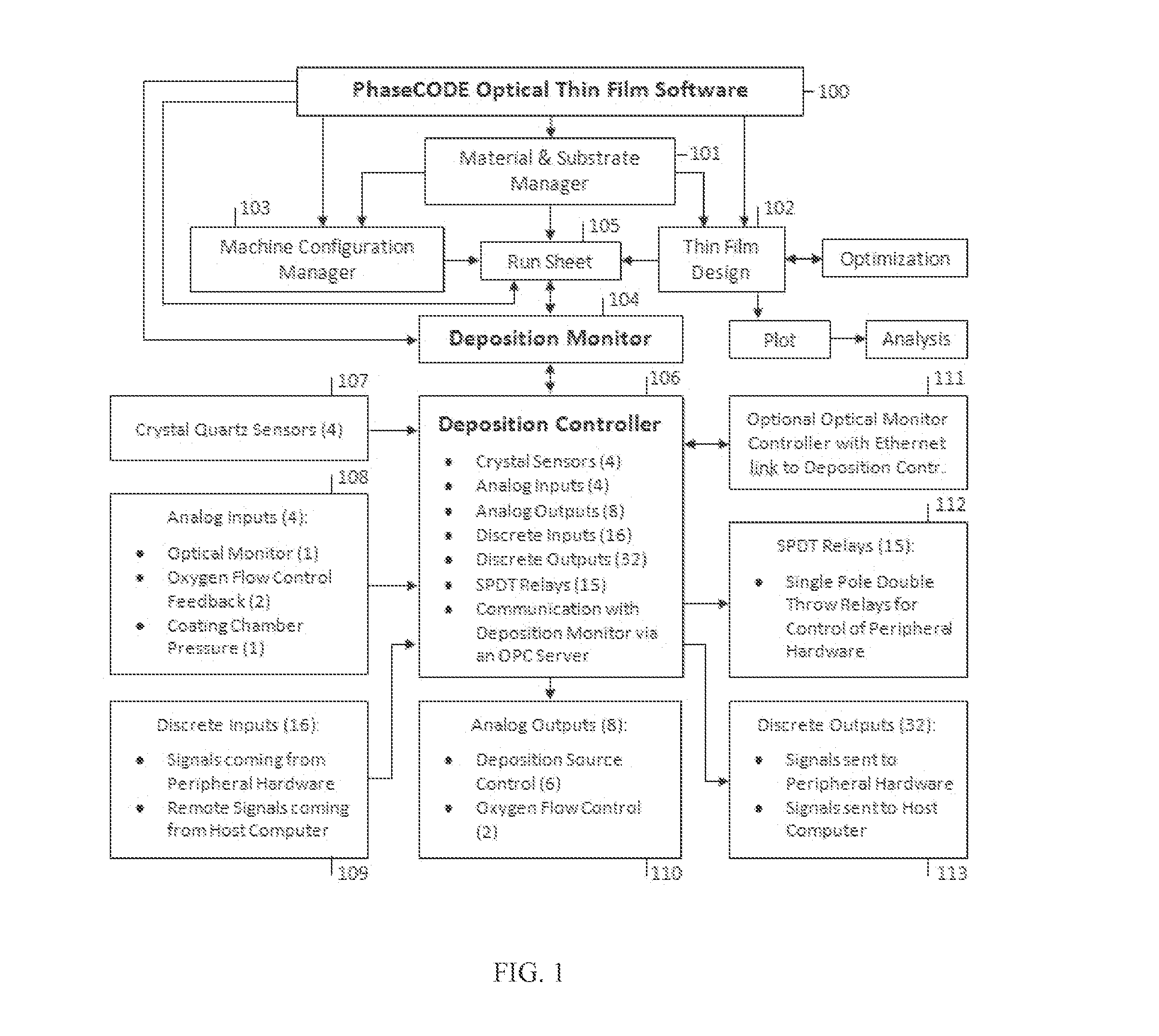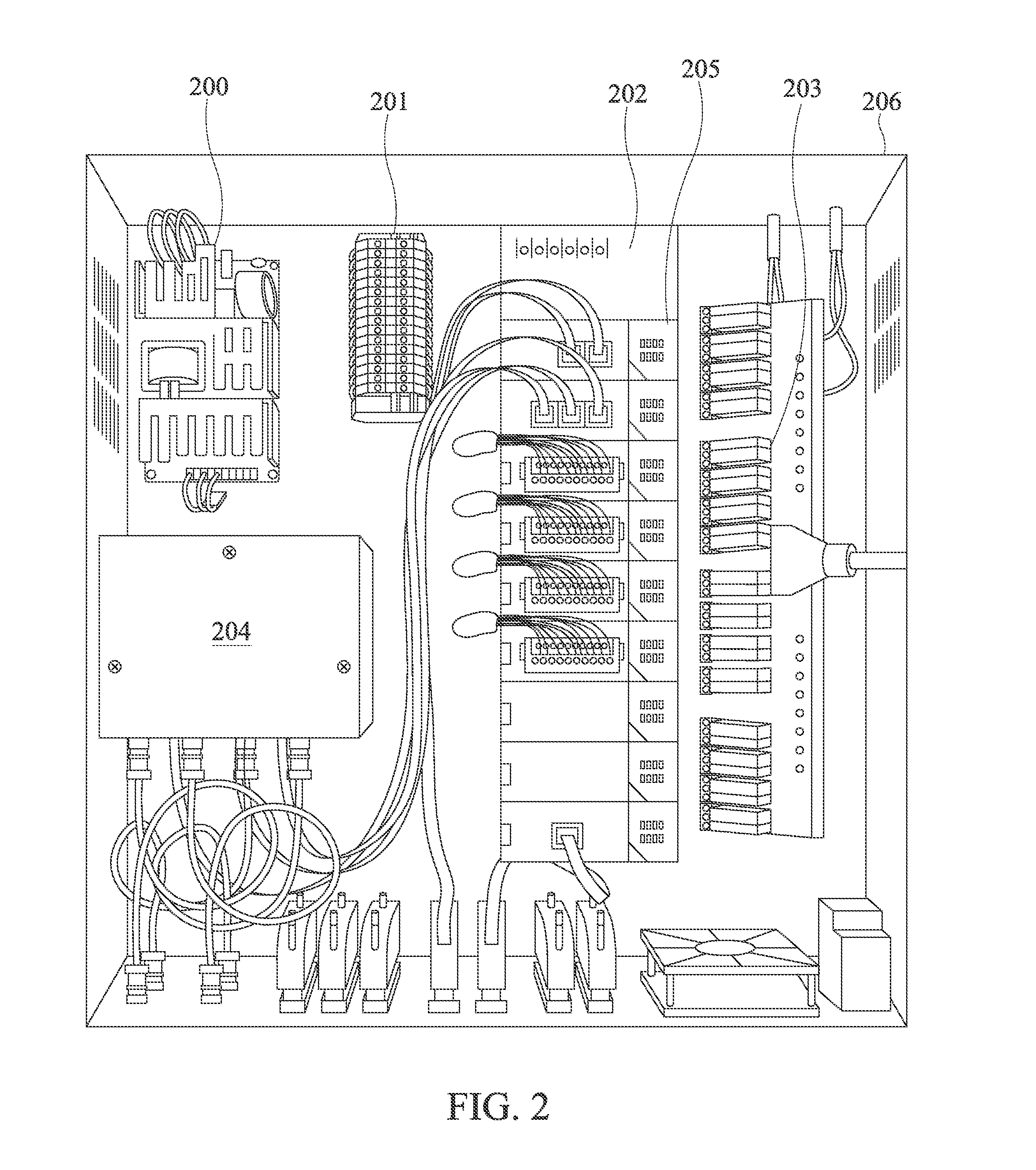Control Module for Deposition of Optical Thin Films
a control module and thin film technology, applied in the direction of programme control, total factory control, electric programme control, etc., can solve the problems of false interpretation of signal changes, components not necessarily designed to integrate with each other, and the most difficult deposition step
- Summary
- Abstract
- Description
- Claims
- Application Information
AI Technical Summary
Benefits of technology
Problems solved by technology
Method used
Image
Examples
Embodiment Construction
[0064]FIG. 1 is the flowchart representing a functional relationship between the different modules of the optical thin film software 100, such as the PhaseCODE available from Galeb Optics of Trinity, Fla., and a deposition controller 106. The software 100 runs on a local computer, which is not shown. The local computer includes a network interface controller (NIC). In a preferred embodiment, the NIC communicates using the TCP / IP protocol. At box 101, the coating materials and substrates are defined in terms of the refractive indices and the extinction coefficients for the range of wavelengths. Three preferred regression methods can be used for interpolation and extrapolation of material and substrate data: polynomial, rational function, and linear. Corresponding data is available to other program modules through the application database. At box 102, a coating design is created or modified using materials and substrates defined in box 101. At box 103, a coating machine configuration ...
PUM
 Login to View More
Login to View More Abstract
Description
Claims
Application Information
 Login to View More
Login to View More - R&D
- Intellectual Property
- Life Sciences
- Materials
- Tech Scout
- Unparalleled Data Quality
- Higher Quality Content
- 60% Fewer Hallucinations
Browse by: Latest US Patents, China's latest patents, Technical Efficacy Thesaurus, Application Domain, Technology Topic, Popular Technical Reports.
© 2025 PatSnap. All rights reserved.Legal|Privacy policy|Modern Slavery Act Transparency Statement|Sitemap|About US| Contact US: help@patsnap.com



